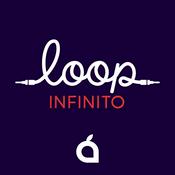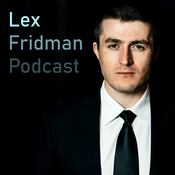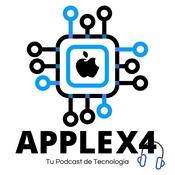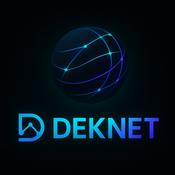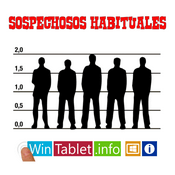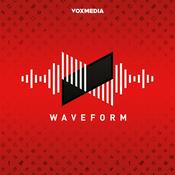42 episodios

How Zapier’s EA built an army of AI interns to automate meeting prep, strengthen team culture, and scale internal alignment | Cortney Hickey
15/12/2025 | 44 min
Cortney Hickey is the executive assistant to the CEO at Zapier, where she’s leveraging AI to transform traditional EA responsibilities into scalable, organization-wide systems. In this episode, she demonstrates how she’s built AI workflows that automate meeting preparation, reinforce company culture through automated feedback, and democratize strategic knowledge across the organization. Her approach shows how EAs can use AI not to replace their roles but to elevate them—working on higher-impact initiatives while creating systems that benefit the entire company.What you’ll learn:How to build an automated meeting prep system that researches participants, checks CRM data, and delivers actionable insights before important meetingsA framework for creating AI-powered culture reinforcement through automated meeting feedback aligned with company values and operating principlesHow to develop an AI-powered document review system that helps teams align with executive expectations before formal reviewsA strategy for creating a centralized knowledge base that makes company strategy accessible and interactive for all employeesWhy “progress over perfection” is the key mindset for building effective AI workflows that evolve over timeHow EAs can use AI automation to work themselves out of repetitive tasks and into higher-impact strategic roles—Brought to you by:WorkOS—Make your app enterprise-ready todayBrex—The intelligent finance platform built for founders—In this episode, we cover:(00:00) Introduction to Cortney(02:48) Overview of meeting prep automation with Zapier Agents(04:43) How the meeting prep agent works(10:21) An example of the meeting prep agent in practice(12:16) Creating a culture reinforcement system through meeting feedback(15:45) EAs’ unique position to leverage these tools(18:12) Building an automated meeting coach(24:03) Developing an executive document review system(33:15) Creating a centralized strategy companion in NotebookLM(36:18) How AI is transforming the EA role, not replacing it(40:00) Lightning round and final thoughts—Tools referenced:• Zapier: https://zapier.com/• Zapier Agents: https://zapier.com/agents• Todoist: https://todoist.com/• Slack: https://slack.com/• HubSpot: https://www.hubspot.com/• ChatGPT: https://chat.openai.com/• Google NotebookLM: https://notebooklm.google/—Where to find Cortney Hickey:LinkedIn: https://www.linkedin.com/in/cortneyhickey/—Where to find Claire Vo:ChatPRD: https://www.chatprd.ai/Website: https://clairevo.com/LinkedIn: https://www.linkedin.com/in/clairevo/X: https://x.com/clairevo—Production and marketing by https://penname.co/. For inquiries about sponsoring the podcast, email [email protected].

ChatGPT agent mode: The “little helper” that transformed recruiting, crafted user personas, and solved parking nightmares | Michal Peled (Honeybook)
08/12/2025 | 58 min
Michal Peled is a Technical Operations Engineer at HoneyBook who specializes in building internal tools and automations that eliminate friction for teams. In this episode, Michal demonstrates three practical AI use cases: using ChatGPT’s agent mode to automate LinkedIn recruiting, transforming customer research into interactive AI personas, and creating a custom calendar solution for a very San Francisco–specific problem—avoiding expensive parking during Giants games.What you’ll learn:How to use ChatGPT agent mode to automate LinkedIn recruiting and find high-quality candidates that manual searches missedThe step-by-step process for turning static customer research into interactive AI personas that product and marketing teams can actually useWhy NotebookLM excels at creating prompts from source material with proper citationsHow to structure agent-mode prompts to create effective “little helpers” that follow your exact workflowA practical framework for improving your prompts when AI tools aren’t giving you the results you wantHow internal tools teams can drive massive impact by focusing on eliminating friction in everyday workflows—Brought to you by:Brex—The intelligent finance platform built for foundersGoogle Gemini—Your everyday AI assistant—In this episode, we cover:(00:00) Introduction to Michal and ChatGPT agent mode(02:10) Using agent mode for LinkedIn recruiting automation(05:14) Creating effective prompts for agent mode(10:50) Demo of agent mode searching LinkedIn profiles(16:29) Results and team reception of the recruiting automation(19:53) The outcome of implementing on Michal’s team(23:50) Creating custom GPT personas from customer research(28:43) Using NotebookLM to transform research into persona prompts(35:00) Adding guardrails to custom GPT personas(37:20) Demo of interacting with custom-persona GPTs(41:02) Creating a calendar automation for parking during baseball games(48:15) Lightning round and final thoughts—Tools referenced:• ChatGPT: https://chat.openai.com/• NotebookLM: https://notebooklm.google.com/• Claude: https://claude.ai/—Other references:• Google Calendar: https://calendar.google.com/• HoneyBook: https://www.honeybook.com/• LinkedIn: https://www.linkedin.com/—Where to find Michal Peled:LinkedIn: https://www.linkedin.com/in/michalpeled/—Where to find Claire Vo:ChatPRD: https://www.chatprd.ai/Website: https://clairevo.com/LinkedIn: https://www.linkedin.com/in/clairevo/X: https://x.com/clairevo—Production and marketing by https://penname.co/. For inquiries about sponsoring the podcast, email [email protected].

Gemini 3 vs. Claude Opus 4.5 vs. GPT-5.1 Codex: Which AI model is the best designer?
03/12/2025 | 25 min
I put three cutting-edge AI models to the test in a head-to-head design competition. Using the exact same prompt, I challenged Google’s Gemini 3, Anthropic’s Opus 4.5, and OpenAI’s Codex 5.1 to redesign my blog page, evaluating them on visual design quality, user experience improvements, and SEO optimization capabilities. One model produced a beautiful, polished, production-ready redesign. One was fine. And one completely whiffed. If you’re trying to figure out where each model fits in your workflow—design, planning, back-end, or something else—this episode will save you a lot of trial and error.What you’ll learn:How each AI model approaches the same design challenge differentlyWhy planning capabilities dramatically impact design qualityThe specific visual and functional improvements each model madeWhich model excels at front-end design versus back-end functionalityHow to strategically choose the right AI model for different parts of your workflowThe importance of model-switching based on specific use cases—Blog design: https://www.chatprd.ai/blog—Brought to you by:Lovable—Build apps by simply chatting with AI—Where to find Claire Vo:ChatPRD: https://www.chatprd.ai/Website: https://clairevo.com/LinkedIn: https://www.linkedin.com/in/clairevo/X: https://x.com/clairevo—In this episode, we cover:(00:00) Introduction to the AI design challenge(01:25) The question: Which model is the better designer?(03:08) The prompt used for all three models(04:10) Gemini 3 Pro’s approach and results(06:00) Opus 4.5’s approach and results(10:54) Codex 5.1’s approach and disappointing results(14:51) Comparing the three designs side by side(16:03) Analyzing the change logs and SEO improvements from each model(22:43) Final verdict(23:00) Conclusion and next steps—Tools referenced:• Gemini 3 Pro: https://deepmind.google/models/gemini/pro/• Anthropic Opus 4.5: https://www.anthropic.com/news/claude-opus-4-5• OpenAI Codex 5.1: https://platform.openai.com/docs/models/gpt-5.1-codex• Cursor: https://cursor.com/—Production and marketing by https://penname.co/. For inquiries about sponsoring the podcast, email [email protected].

“PMs who use AI will replace those who don’t”: Google’s AI product lead on the new PM toolkit | Marily Nika
01/12/2025 | 40 min
Marily Nika, AI Product Lead at Google and founder of the AI Product Academy, demonstrates how product managers can leverage AI tools to dramatically accelerate their workflow. Using a smart-fridge concept as an example, Marily walks us through the exact workflow she uses to build products faster: doing user research with Reddit debates, generating PRDs with custom GPTs, prototyping with v0, and even creating stakeholder-ready video mockups using VEO and Sora. She shows how “tool hopping” between specialized AI applications creates a powerful workflow that transforms traditional PM processes and enables more compelling product storytelling.What you’ll learn:How to use Perplexity’s “discussions and opinions” filter to mine Reddit for user insights and create pro/con agent debates that reveal product-market fit requirementsA workflow for transforming market research into comprehensive PRDs using custom GPTs that maintain your personal voice and styleTechniques for turning PRDs into interactive prototypes using v0.dev that make your product vision tangible for stakeholdersHow to create persuasive product videos using Flow and Sora that communicate your vision more effectively than traditional presentationsWhy “tool hopping” between specialized AI applications creates a more powerful workflow than using a single toolHow to use NotebookLM as an interactive judge for product demos and pitch competitions—Brought to you by:WorkOS—Make your app enterprise-ready todayMiro—The AI Innovation Workspace where teams discover, plan, and ship breakthrough products—Where to find Marily Nika:LinkedIn: https://www.linkedin.com/in/marilynika/Website: https://www.marilynika.me/Substack: https://marily.substack.com/AI Product Management Bootcamp & Certification by AI Product Academy: https://bit.ly/4p8tn2r—Where to find Claire Vo:ChatPRD: https://www.chatprd.ai/Website: https://clairevo.com/LinkedIn: https://www.linkedin.com/in/clairevo/X: https://x.com/clairevo—In this episode, we cover:(00:00) Introduction to Marily Nika(02:54) Smart-fridge use case inspiration(06:15) Using Perplexity to mine Reddit for user research(11:19) Creating a comprehensive PRD with ChatGPT(13:40) Building an interactive prototype with v0(16:20) Using prototypes as stakeholder influence tools in product reviews(21:30) Generating product videos with Flow and Sora(30:17) The complete 20-minute product workflow, from research to video(32:06) Using NotebookLM as an AI judge for product demo days(37:38) What to do when AI tools aren’t giving you what you want—Tools referenced:• Perplexity: https://www.perplexity.ai/• ChatGPT: https://chat.openai.com/• v0.dev: https://v0.dev/• Flow (Google Labs): https://labs.google/flow/about• Sora: https://openai.com/sora• NotebookLM: https://notebooklm.google/—Other references:• AI Product Management Bootcamp: https://maven.com/lenny/ai-product-management• Lenny’s List on Maven: https://maven.com/lenny—Production and marketing by https://penname.co/. For inquiries about sponsoring the podcast, email [email protected].

How to create your own AI performance coach: Optimizing your unique nutrition, recovery, and injury management needs | Lucas Werthein (Cactus)
24/11/2025 | 51 min
Lucas Werthein, the COO and co-founder of Cactus, shares how he built a personalized AI wellness coach using ChatGPT to optimize his athletic performance while managing past injuries. After multiple surgeries on his knees, shoulder, and foot, Lucas created a system that synthesizes data from medical imaging, blood tests, wearable devices, and nutrition plans to provide personalized recommendations. His AI coach helps him balance competitive tennis, weightlifting, and running a company while maintaining his goal of “feeling 25 in a 40-year-old body.” Lucas demonstrates how this approach transforms siloed health information into actionable insights that protect joints, optimize recovery, and extend peak performance.What you’ll learn:How to configure a ChatGPT with multiple data types, including MRIs, x-rays, blood tests, and wearable metrics, to create a comprehensive health profileA framework for setting clear performance boundaries that prioritize joint protection, energy optimization, and injury preventionTechniques for using AI to balance nutrition around special events like social dinners while maintaining performance goalsHow to use images and videos to get AI feedback on physical symptoms and injury recovery timelinesA method for validating and contextualizing medical advice by having AI synthesize information from multiple health-care providersWhy creating clear rules and anti-prompts helps AI deliver practical, evidence-based recommendations instead of trendy supplements or extreme protocols—Copy Lucas’s Health Coach Prompt: https://www.lennysnewsletter.com/p/how-to-create-your-own-ai-performance-coach—Brought to you by:WorkOS—Make your app enterprise-ready todayGoogle Gemini—Your everyday AI assistant—Where to find Lucas Werthein:Website: https://cactus.is/—Where to find Claire Vo:ChatPRD: https://www.chatprd.ai/Website: https://clairevo.com/LinkedIn: https://www.linkedin.com/in/clairevo/X: https://x.com/clairevo—In this episode, we cover:(00:00) Introduction to Lucas’s athletic background and injury history(04:55) The challenge of synthesizing siloed health data(06:11) Building a GPT to optimize performance and recovery(09:57) Demonstrating the data types integrated into the AI coach(13:54) Configuring the GPT with clear performance goals and boundaries(16:31) Setting realistic expectations for the AI coach(17:50) Creating nutrition, training, and recovery frameworks(21:47) Establishing hard boundaries and anti-prompts(24:25) Example: Managing nutrition around special events(27:30) Accessibility and affordability of on-demand coaching(28:24) Practical examples and real-life scenarios(29:31) Using AI for injury management and recovery planning(34:19) Validating expert opinions and translating medical advice(37:25) Vision for the future of AI in personal health coaching(43:27) Other AI workflows: synthetic clients and AI co-founders(48:48) Final thoughts on AI reliability and evolution—Tool referenced:• ChatGPT: https://chat.openai.com/—Other references:• InBody scan: https://inbodyusa.com/• Whoop: https://www.whoop.com/—Production and marketing by https://penname.co/. For inquiries about sponsoring the podcast, email [email protected].
Más podcasts de Tecnología
Podcasts a la moda de Tecnología
Acerca de How I AI
Escucha How I AI, Emilcar Daily y muchos más podcasts de todo el mundo con la aplicación de radio.es

Descarga la app gratuita: radio.es
- Añadir radios y podcasts a favoritos
- Transmisión por Wi-Fi y Bluetooth
- Carplay & Android Auto compatible
- Muchas otras funciones de la app
Descarga la app gratuita: radio.es
- Añadir radios y podcasts a favoritos
- Transmisión por Wi-Fi y Bluetooth
- Carplay & Android Auto compatible
- Muchas otras funciones de la app


How I AI
Descarga la app,
Escucha.


